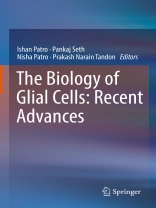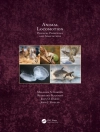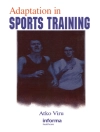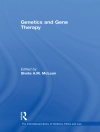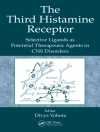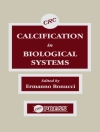This book reviews the role of glial cells (astrocytes, microglia, oligodendroglia, satellite cells, and Schwann cells) in neuronal health and diseases. It discusses the latest advances in understanding their origin, differentiation, and hemostasis. The book also examines the role of microglial cells in central nervous system (CNS) development, maintenance, and synaptic plasticity. Further, the book presents the functions of astrocytes in healthy CNS and their critical role in CNS disorders, including Parkinson’s and Alzheimer’s diseases. Notably, the book describes the pathobiology, molecular pathogenesis, stem cells, and imaging characteristics of gliomas. It defines the role of glial cells in regulating iron homeostasis and their effect on the neurodegeneration of neurons. Lastly, it covers the structure, function, and pathology of oligodendrocytes and their role in neuronal health and disease.
Cuprins
Chapter 1_Glial Biology: A Historical Perspective.- Chapter 2_. Basic Biology of Astrocytes.- Chapter 3_ Oligodendrocyte: Structure, Function and Pathology.- Chapter 4_ Oligodendroglial-astroglial cell-cell communication in the Central Nervous System.- Chapter 5_ Oligodendroglial Gap junction communication in CNS myelination and demyelination .- Chapter 6_ Generation and maturation of macroglia in central nervous system. – Chapter 7_ Origin and Development of Microglia.- Chapter 8_ Biology of Astrocytes in CNS Infection.- Chapter 9_ Role of reactive astrocytes in Alzheimer’s disease.- Chapter 10_ Role of astrocyte dysfunction in Parkinson’s Disease pathogenesis.- Chapter 11_ Astroglial Pathology in Major Depressive Disorders: Metabolic and Molecular Aspects.- Chapter 12_ Glia in epilepsy: an overview.- Chapter 13_ Tumors of the Glia: Recent Advances.- Chapter 14_ Astroglial iron homeostasis and neurodegenerative diseases.-Chapter 15_ Glial cells are Key Orchestrators of Neural degeneration in Basal Ganglia Disorders: Classical and Contemporary observations.- Chapter 16_ Interplay between microglia and astrocytes during neuroinflammation: Lessons learnt from in-vitro and in-vivo models of sporadic Amyotrophic Lateral Sclerosis.- Chapter 17_ Microglia orchestrate inflammation via HSP60 driven signaling pathway: a road map of molecular mechanism.- Chapter 18_ Biphasic Role of Microglia in Brain Health and Disease.- Chapter 19_ Multidimensional roles of Microglial Cells in Neuroviral Infections.- Chapter 20_ Microglia Aging.- Chapter 21_ Emerging Role of Satellite and Schwann Cells of Peripheral Neuroglial System in Nerve Repair.- Chapter 22_ Insights in the role of glia in mediating brain plasticity in health and disease.- Chapter 23_ The glial perspective of energy homeostasis, neuroinflammation and neuro-nutraceuticals.- Chapter 24_ Role of glia in Huntington’s disease.- Chapter 25_ Endogenous mediators of neuroinflammation: The endocannabinoid system at the retina.- Chapter 26_ Drosophila melanogaster: An Immaculate Model for Glial Research.- Chapter 27_In-vitro models of Astrocytes: An Overview.
Despre autor
Dr. Ishan Patro is Professor of Zoology/Neuroscience at Jiwaji University, Gwalior, and Former Vice Chancellor of Ravenshaw University, Cuttack. He holds M.Phil. and Ph.D. degrees of Kurukshetra University, Kurukshetra. He had his Post-Doctoral at MRC Neurochemical Pathology Unit, Newcastle upon Tyne, UK, and Dept. of Anatomy, University of Cologne, Germany. He has 32 years of teaching and 40 years of research experience. He is elected Fellow of the National Academy of Sciences (India), Indian Academy of Neurosciences, Collegium Internationale Neuropsychopharmalogicum, and Honorary National Fellow of The Zoological Society, Kolkata. He has several awards and honors to his credit including the B.K. Bachhawat Life Time Achievement Award of Indian Academy of Neurosciences (2018). He is currently the President of the Indian Academy of Neurosciences. He has made significant contribution to glial neurobiology with special reference to the role of microglia and astrocytes in neurodegeneration and the perpetuating effect of glia on the health of the neurons and vice versa. He was the Coordinator of the DBT National Initiative on Glial Cell Research in Health and Disease. He has published more than 90 research papers and has guided 6 M.Phil. and 29 Ph.D. theses. His outstanding contribution to Human Resource Development in Neuroscience (M.Sc. and Ph.D. in Neuroscience since 2001) by establishment of India’s 1st UTD of Neuroscience at Jiwaji University, Gwalior, deserves a special mention.
Dr. Pankaj Seth is working as a Senior Professor at the National Brain Research Centre, Manesar, an Institute of Excellence in India. He obtained his Ph D in Medical Biochemistry from the University of Kanpur, and his post-doctoral training at National Institutes of Disorders and Stroke, National Institutes of Health, Bethesda, USA. He has 25 years of research and 18 years of teaching experience. He is an elected fellow of the National Academy of Sciences (India), the National Academy of Medical Sciences and Indian Academy of Neurosciences. Dr. Seth has made immense contributions in glial biology, particularly in understanding role of astrocytes in viral neuropathogenesis. He has published more than 70 research papers, 8 book chapters and editorials. He is recipient of several national and international awards, serves on editorial boards of international journals and is council member of International Society of Neurovirology, USA, International Society of Neurovirology, USA and the Asian Pacific Society of Neurochemistry, Singapore.
Dr. Nisha Patro has been working as Research Scientist with support from the Department of Science and Technology and Department of Biotechnology, Govt. of India. She holds M.Sc. and Ph.D. degrees of Kurukshetra university, Kurukshetra. She had her Post-Doctoral at MRC Neurochemical Pathology Unit, Newcastle upon Tyne, UK. She has 39 years of research and 30years of teaching experience. She is an elected member of the National Academy of Sciences (India) and elected Fellow of Collegium Internationale Neuropsychopharmalogicum. She has significantly contributed to the areas of development of glia and role of glia in development of the brain and developmental neurotoxicity. She is recipient of the ‘Jyotsanamayee Raghunath Bhattacharya Prize’ for Best Paper published in 2009-10 by the Indian Academy of Neurosciences. She has completed 5 research projects as a Principal/ Co-Principal Investigator and also participated in the DBT National Initiative on Glial Cell Research in Health and Disease. She has 49 research papers and 8 book chapters to her credit.
Dr. Prakash Narain Tandon the doyen of Indian Neuroscience was born on 13.08.1928 at Shimla, India. He received his medical education at K.G. Medical College, Lucknow, (MBBS 1950, First in the University, M.S. 1952), obtained FRCS England 1956, received training in Neurosurgery at Oslo, Norway and Montreal, Canada. He started the first academic Neurosurgical unit in Uttar Pradesh in his alma Mater (1961) and moved to All India Institute of Medical Sciences (AIIMS) to establish the first Neurosurgical Department there (1965) which was upgraded as Neurosciences Centre (1975). Following his superannuation, he catalysed the establishment of the National Brain Research Centre (1997) which he served as its Founding President (2002).He has trained more than 50 neurosurgeons who serve all over the country. With the help of various Government agencies (DBT, DST, ICMR, CSIR and UGC) he promoted overall development of neuroscience. He had edited 32 monographs, published more than 250 papers and contributed 50 chapters to various books.
He is one of the most highly recognized medical scientists, being a Fellow of the three Science Academies (President of two of them – INSA, NASI), the National Medical Academy (its Vice-President) and the Indian Academy of Neurosciences (as its President). The Norwegian Academy of Sciences, the Royal Society of Medicine conferred their Fellowship. He was Co-Chair of the IAP (inter academy panel of World Academies of Sciences). He was Honorary Surgeon to the President of India and a Member of the Science Advisory Council of the Prime Minister. Among many of their awards/ recognition he has been awarded the Second Highest Civilian award (Padma Vibhushan) and is currently National Research Professor.
